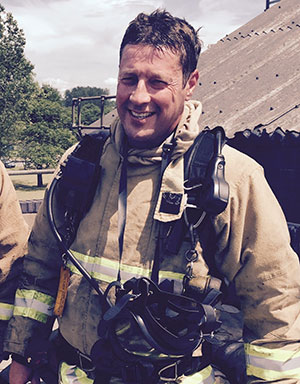Care Home Evacuation Concerns
During a prosecution involving two care home owners, their advocate, whilst mitigating their case, relied upon the fact that as they had employed four nursing staff to care for their forty, elderly and immobile, residents overnight, they had complied with the necessary regulations.
As I was about to spring to my feet to object to such a proposition, I realised that he was referring to CQC healthcare regulations and not to the FSO. I was somewhat annoyed at his submission, given that when a fire had occurred within the nursing home in December 2012, the 4 members of staff had vacated the premises, leaving all of the residents in their rooms, some without even their doors being shut.(Care Home Staff leave Elderly Residents during Fire)
It occurred to me, therefore, that there is a danger that the priority of some care home owners when deciding upon overnight staff provision was compliance with appropriate care staff to resident ratios and not whether or not there will be sufficient staff to evacuate vulnerable residents in the event of a fire. As this was the sixth case in which I have been involved with enforcement proceedings against care homes, I believe I have justification from my concerns. All of those 6 cases (one of which involved a fatality) involved issues regarding the evacuation of elderly and in some of the cases, disabled residents.
In none of the 6 cases had fire drills been carried out at night with limited numbers of staff. There had been an understandable reluctance to disturb or upset their frail residents during the hours of darkness. All of the fire risk assessments (where in existence, and suitable and sufficient) seemed to presume that a fire would occur during the day, with a full complement of staff and whilst the majority of residents were eating their dinner. In all of the cases staff seemed to have had a very loose understanding of ‘horizontal evacuation’ procedures and serious misunderstandings in relation to the ‘stay put’ principle.
In reality, when fires occurred within the care homes involved, even the existing documented evacuation procedures were not followed. In one case, an elderly resident sadly died in her room of smoke inhalation and in 3 of the cases the limited number of staff who were on duty, telephoned the fire service and vacated the premises without taking any of the residents with them.
I accept that ensuring the safety of such relevant persons in the event of the fire is not an easy task, and that it is extremely hard for Independent fire risk assessors to advise upon when staffing issues will never be within their control. How many fire risk assessors would go as far as to advise their care home clients that they would require double the number of staff usually employed to safely evacuate residents to a place of safety within the appropriate time? Even if that advice was given, would it be acted upon in all cases?
Article 15 (1) of the FSO requires those responsible for running care homes and other similar healthcare premises to establish and give effect to appropriate procedures, including fire safety drills, to be followed in the event of serious and imminent danger to relevant persons, and further, Article 15 (2) requires them to nominate a sufficient number of competent persons to implement those procedures, insofar as they relate to the evacuation of relevant persons from the premises.
It is essential that the staff to resident/patient ratio required by organisations like the Care Quality Commission for the purpose of healthcare; and the disruptive nature of fire drills at inconvenient times does not lead to the preventative planning required for effective evacuation in the event of fire being disregarded.



